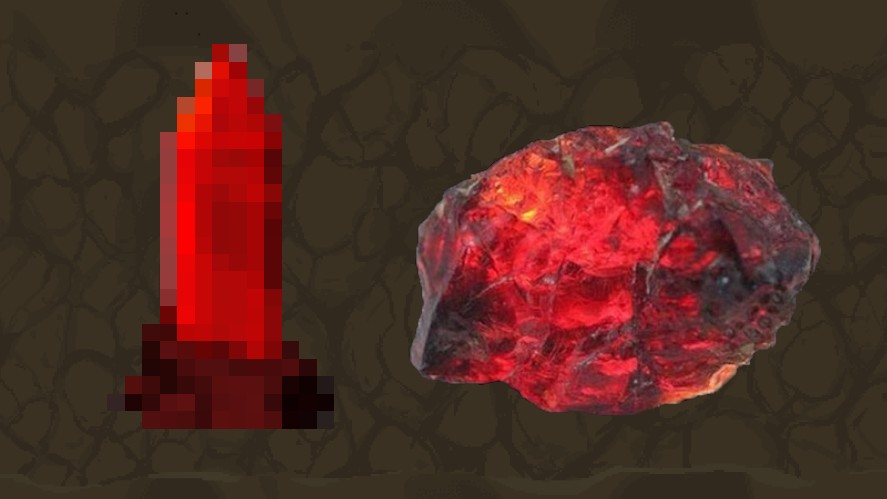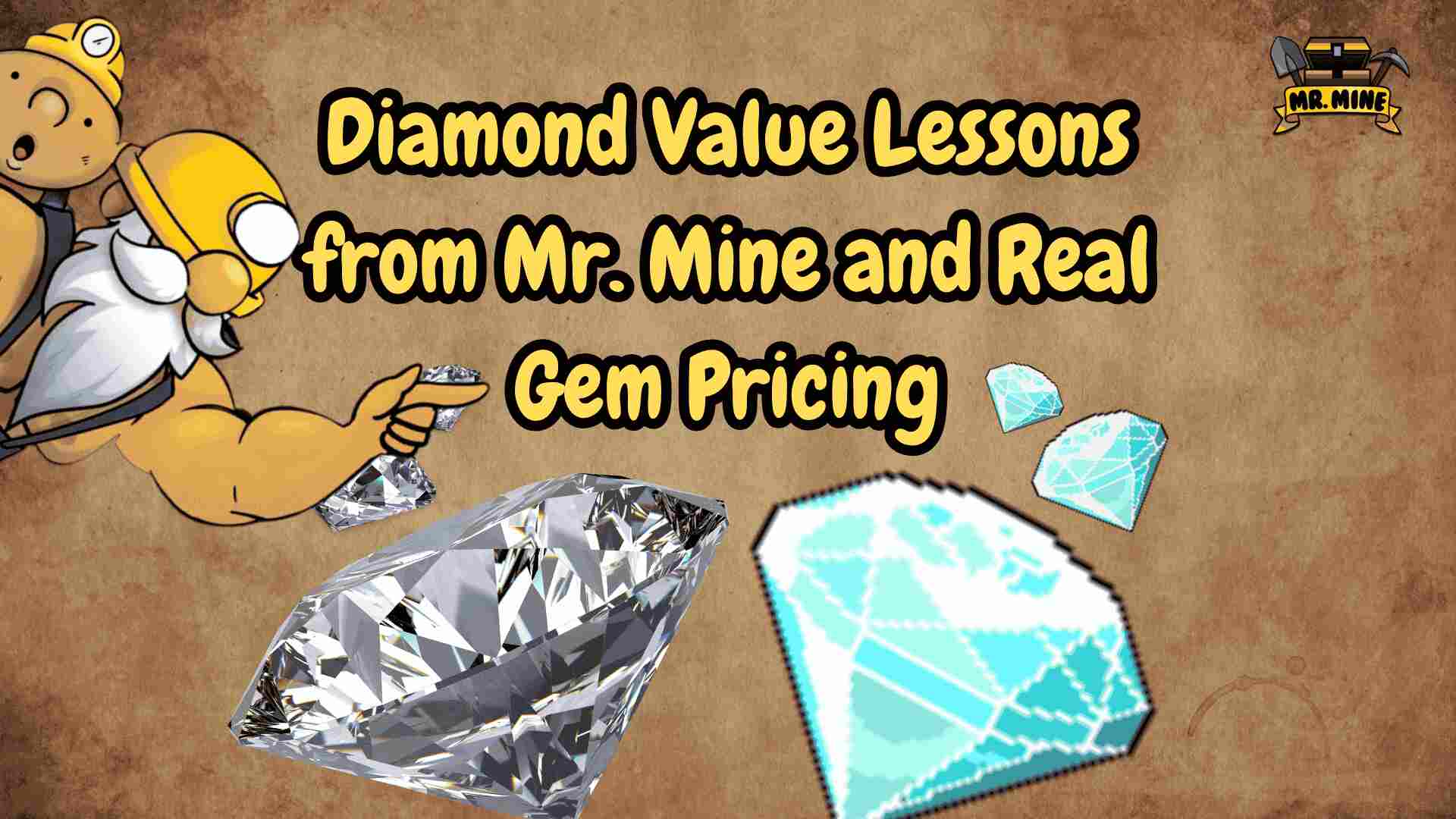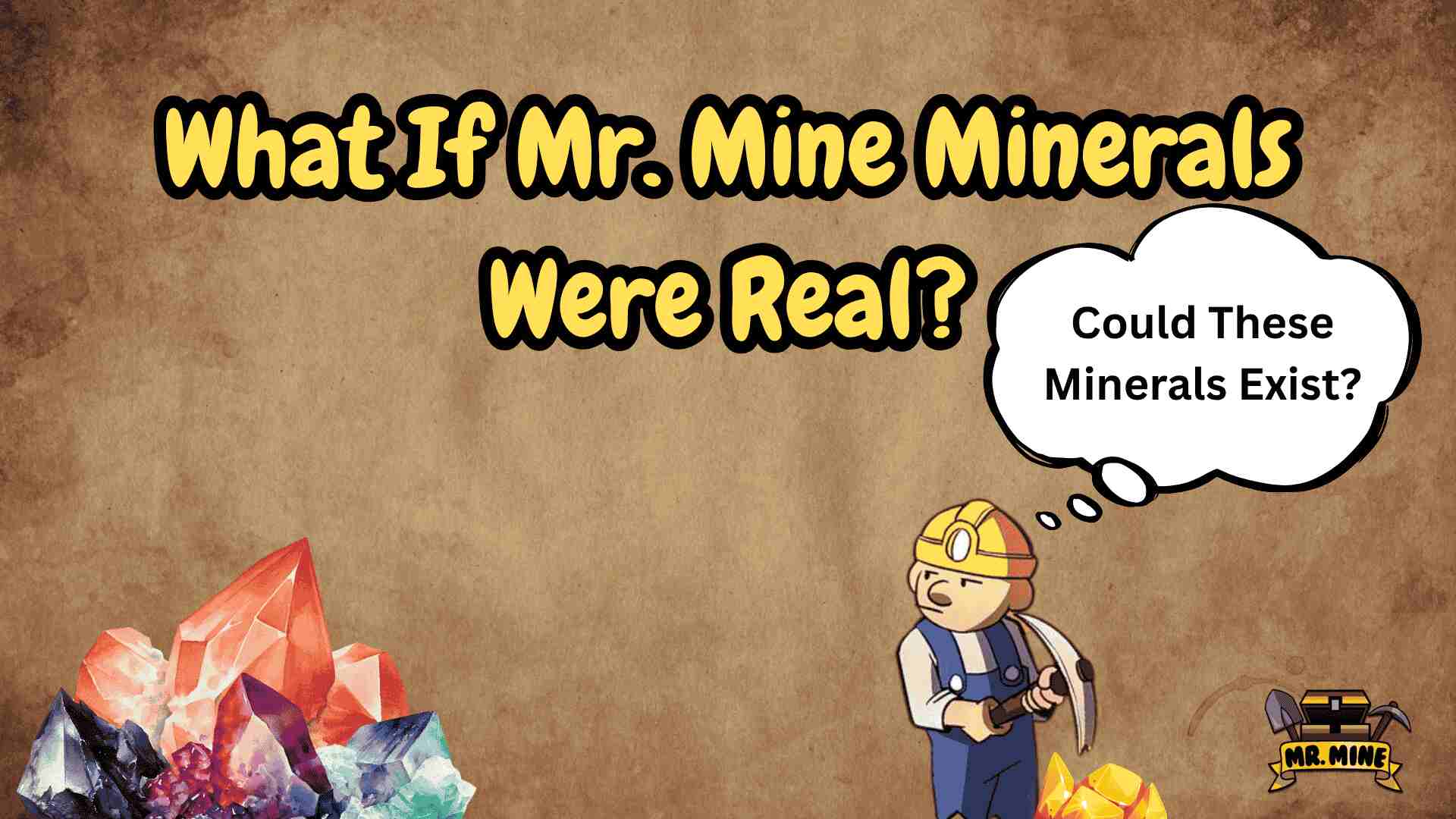Digging through the mineshaft in Mr. Mine feels like unearthing digital treasure.
This standout mining game starts players off with humble resources like coal, but soon reveals high-value finds such as titanium and neodymium, sparking curiosity about their real-world equivalents. Fans of miner games and incremental games alike are drawn in by the thrill of discovery.
But what if the shimmering isotopes in Mr. Mine mirrored the world’s most expensive gemstones?
Let’s explore how this free mining game blends engaging gameplay with a surprising connection to real-world mining and gemstone rarity.
Titanium & Rare Isotopes vs. Real‑World Gem Rarity
In Mr. Mine, titanium and neodymium are among the most coveted resources.
Titanium shows up at shallower depths on the Moon and sells for a hefty $750,000,000 per unit at the Sell Center. Dig deeper (~1562 km) and neodymium appears, valued at a staggering $10 billion per unit.
These rare materials are key to progressing through the miners game, unlocking upgrades, and advancing faster.
In the real world, titanium’s durability draws comparisons to tough gems like sapphires, while neodymium’s rarity and magnetic properties are reminiscent of elusive stones like painite.
This clever parallel brings a new layer of intrigue to Mr.Mine, connecting game-world riches with the allure of Earth’s most prized jewels.
What Makes a Gemstone ‘Most Expensive’?
Unlike fixed in-game prices, real-world most expensive gemstones are valued based on a mix of:
- Rarity
- Size
- Color
- Origin
Painite, one of the rarest minerals on Earth, commands $50,000–$60,000 per carat because it’s found in only a few deposits in Myanmar.

Carat weight also drives value, like the famous Pink Star Diamond, which sold for $83 million thanks to its 59.6-carat size.
Color is another major factor. Vivid tones like the deep red of a “pigeon blood” ruby can fetch over $1 million per carat.
Finally, provenance, or where the gem comes from, adds historical and cultural value. For example, Burmese rubies are often considered more desirable.
These factors show why, in the real world, gemstone prices can soar far beyond even the highest virtual rewards in mining games like Mr. Mine.
The Top 10 Most Expensive Gemstones in the World
Ever wondered how the minerals you dig up in MrMine stack up against real-world treasures?
Here’s a countdown of the most jaw-droppingly expensive gemstones ever discovered, and their in-game counterparts if they existed in Mr. Mine’s universe.
Blue Diamond – Up to $200–350 Million
Blue diamonds like the Hope Diamond or Oppenheimer Blue are the crown jewels of the gem world.
Their stunning hue comes from trace amounts of boron, and their rarity makes them almost priceless, fetching up to $3.9 million per carat.
If Mr. Mine’s Neodymium were a gemstone, it’d be the Blue Diamond. It’s ultra-rare, incredibly valuable, and buried deep in the game’s digital Earth.
Pink Diamond – ~$71 Million
The Pink Star diamond set auction records with a jaw-dropping sale of $71 million, thanks to its intense pink color and flawless cut.
With only a handful of vivid pink diamonds discovered, their scarcity keeps prices sky-high.
Think of it like Promethium, a later-game mineral that’s extremely rare, powerful, and valuable.
Jadeite – ~$3 Million Per Carat
Unlike common jade, jadeite is the purest, most vibrant green version, especially prized in Chinese culture. Top-quality stones have sold for up to $3 million per carat.
If Jadeite were in the Mister Mine, it’d be like a mid-depth mineral. It’s rare, beautiful, and essential for ceremonial upgrades.
Ruby – ~$30 Million (Pigeon’s Blood Color)
The Sunrise Ruby, known for its vivid red hue called “pigeon’s blood”, sold for $30 million total, making rubies the most expensive colored gemstone per carat in many auctions.
Ruby’s intensity feels like Plutonium, a mineral you don’t just find, you work for.
Emerald – ~$305,000 Per Carat
Deep green, inclusion-rich emeralds are one of the “big three” colored gemstones (along with rubies and sapphires). High-end Colombian emeralds can reach over $300,000 per carat.
If Titanium had a gemstone twin, it’d be emerald—durable, valuable, and always in demand.
Alexandrite – ~$70,000 Per Carat
This color-changing gem flips from green to red under different lighting. It’s so rare that clean stones above 1 carat fetch upwards of $70,000 per carat.
Alexandrite actually exists in Mr. Mine and is worth $1.2 quintillion per unit.
Musgravite – ~$35,000 Per Carat
Only a few dozen Musgravite stones are cut each year, making them ultra-rare. Originating in Australia, they can reach $35,000 per carat.
Musgravite would be one of those ultra-deep minerals, the kind your best drill operators struggle to reach.
Red Beryl – ~$10,000 Per Carat
Sometimes called “scarlet emerald”, red beryl is 1,000 times rarer than gold. With its brilliant red color, it easily reaches $10,000 per carat.
Red Beryl would totally be a special-event mineral in Mr. Mine, a fleeting treasure with legendary value.
Black Opal – ~$9,500 Per Carat
The rarest type of opal, black opals have fiery color play against a dark background. Found mainly in Lightning Ridge, Australia, they command up to $9,500 per carat.
Black Opal can be found quite early in Mr. Mine at around 79km and is sold for $2,000 per unit.
Tanzanite – ~$1,200 Per Carat
Discovered only in Tanzania, this violet-blue stone is fading fast due to depleted mines. Its current value hovers around $1,200 per carat.
Tanzanite fits perfectly as an early-rare mineral in the mine game. It’s accessible but still special.
Monster Minerals – How Mr. Mine’s Neodymium ($10B) Would Compare to The Most Expensive Gemstones
In Mr. Mine, Neodymium is valued at an outrageous $10 billion per unit, a number that makes even the rarest and most expensive gemstones blush.
Even the Oppenheimer Blue, the most expensive diamond ever sold, fetched just $80 million.

Neodymium’s in-game value is pure fantasy, and that’s the fun of it.
It’s the ultimate prize, deeper than most players ever dig, and likely more valuable than any real-world material, unless a planet made entirely of blue diamonds is discovered.
Tips for Gem Hunters & Mr. Mine Gamers
Whether you’re mining for fun in a gold mining game or eyeing a real-world investment, understanding the strategy behind valuable finds can make all the difference.
Real-World Gem Hunting
Thinking of buying a real gemstone? Here’s what to check before splurging:
- Provenance: Gems from famous regions (like Burmese rubies or Colombian emeralds) often hold more value.
- Certification: Always buy certified stones from reputable labs like GIA or AGS.
- Color & Clarity: The more vivid and clean a gem, the more it’s worth. But natural inclusions can also add character.
Mr. Mine Strategy to Mine the Most Expensive Gemstones
Want to dig deeper and hit the good stuff in Mr. Mine, a game where you dig for minerals? Here’s how:
- Prioritize Drill Upgrades: Better drills = faster depth = rarer minerals.
- Target Deep Layers: Materials like Promethium, Titanium, and Neodymium only show up after 1200 of kilometers down.
- Upgrade Miners: Always upgrade your miners for max gain while you explore new depths.
Conclusion: Fantasy vs. Reality
The thrill of digging for digital riches in Mr. Mine idle mining mirrors the real-world excitement of gemstone hunting.
While no gemstone sells for the absurd $10B valuation of in-game Neodymium, the real-world stakes are just as captivating.
Whether you’re a casual gamer or a budding gemologist, both worlds and their mining facts offer a unique kind of treasure.
So next time you strike Titanium in Mr. Mine, imagine you’re holding a sapphire. And if you ever dig up Neodymium? Just know you’ve found the digital equivalent of Earth’s rarest jewel.





